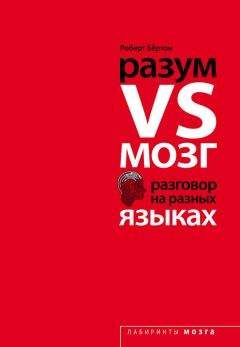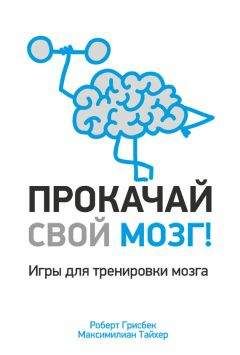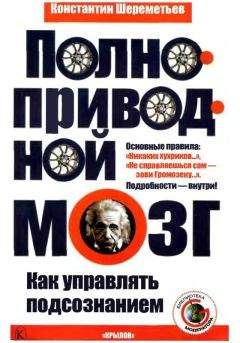Neuroimage 7(3):232–243.
Grainger, J., Granier, J. P., Farioli, F., Van Assche, E., & van Heuven, W. J. (2006). Letter position information and printed word perception: The relative-position priming constraint. Journal of Experimental Psychology: Human Perception and Performance 32(4):865–884.
Grainger, J., & Jacobs, A. M. (1996). Orthographic processing in visual word recognition: A multiple read-out model. Psychological Review 103(3):518–565.
Grainger, J., & van Heuven, W. (2003). Modeling letter position coding in printed word perception. // Bonin, P. (Ed.), The mental lexicon (c. 1–24). New York: Nova Science Publishers.
Grainger, J., & Whitney, C. (2004). Does the huamn mnid raed wrods as a wlohe? Trends in Cognitive Sciences 8(2):58–59.
Grainger, J., & Ziegler, J. (2007). Cross-code consistency effects in visual word recognition. // Grigorenko, E. L., & Naples, A. J. (Eds.), Single-word reading: Biological and behavioral perspectives (c. 129–158). New York: Erlbaum.
Grill-Spector, K., Kushnir, T., Hendler, T., Edelman, S. Itzchak, Y., & Malach, R. (1998). A sequence of object-processing stages revealed by fMRI in the human occipital lobe. Human Brain Mapping 6(4):316–328.
Grill-Spector, K., & Malach, R. (2001). fMR-adaptation: A tool for studying the functional properties of human cortical neurons. Acta Psychologica (Amsterdam) 107(1–3):293–321.
Grill-Spector, K., Sayres, R., & Ress, D. (2006). High-resolution imaging reveals highly selective nonface clusters in the fusiform face area. Nature Neuroscience 9(9):1177–1185.
Grigorenko, E. L. (2003). The first candidate gene for dyslexia: Turning the page of a new chapter of research. Proceedings of the National Academy of Sciences 100(20):11190–11192.
Ha Duy Thuy, D., Matsuo, K., Nakamura, K., Toma, K., Oga, T., Nakai, T., Shibasaki, H., & Fukuyama, H. (2004). Implicit and explicit processing of Kanji and Kana words and non-words studied with fMRI. Neuroimage 23(3):878–889.
Habib, M. (2000). The neurological basis of developmental dyslexia: An overview and working hypothesis. Brain 123(Pt 12):2373–2399.
Hagoort, P., Indefrey, P., Brown, C., Herzog, H., Steinmetz, H., & Seitz R. J. (1999). The neural circuitry involved in the reading of German words and pseudowords: A PET study. Journal of Cognitive Neuroscience 11(4):383–398.
Hammond, P., & Hughes, P. (1978). Upon the pun: Dual meaning in words and pictures. London: W. H. Allen.
Hanley, J. R., & Kay, J. (1996). Reading speed in pure alexia. Neuropsychologia 34(12):1165–1174.
Hannula-Jouppi, K., Kaminen-Ahola, N., Taipale, M., Eklund, R., Nopola-Hemmi, J., Kaariainen, H., & Kere, J. (2005). The axon guidance receptor gene ROBO1 is a candidate gene for developmental dyslexia. PLoS Genetics 1(4):e50.
Harm, M. W., & Seidenberg, M. S. (1999). Phonology, reading acquisition, and dyslexia: Insights from connectionist models. Psychological Review 106(3):491–528.
–—. (2004). Computing the meanings of words in reading: Cooperative division of labor between visual and phonological processes. Psychological Review 111(3):662–720.
Hasson, U., Harel, M., Levy, I., & Malach, R. (2003). Large-scale mirror-symmetry organization of human occipito-temporal object areas. Neuron 37(6):1027–1041.
Hasson, U., Levy, I., Behrmann, M., Hendler, T., & Malach, R. (2002). Eccentricity bias as an organizing principle for human high-order object areas. Neuron 34(3):479–490.
Haxby, J. V., Gobbini, M. I., Furey, M. L., Ishai, A., Schouten, J. L., & Pietrini, P. (2001). Distributed and overlapping representations of faces and objects in ventral temporal cortex. Science 293(5539):2425–2430.
Haxby, J. V., Ishai, I. I., Chao, L. L., Ungerleider, L. G., & Martin, I. I. (2000). Object-form topology in the ventral temporal lobe: Response to I. Gauthier (2000). Trends in Cognitive Sciences 4(1):3–4.
Heilman, K. M., Howell, G., Valenstein, E., & Rothi, L. (1980). Mirror-reading and writing in association with right-left spatial disorientation. Journal of Neurology, Neurosurgery, and Psychiatry 43(9):774–780.
Helenius, P., Tarkiainen, A., Cornelissen, P., Hansen, P. C., & Salmelin, R. (1999). Dissociation of normal feature analysis and deficient processing of letter-strings in dyslexic adults. Cerebral Cortex 9(5):476–483.
Hermer, L., & Spelke, E. (1996). Modularity and development: The case of spatial reorientation. Cognition 61(3):195–232.
Houzel, J. C., Carvalho, M. L., & Lent, R. (2002). Interhemispheric connections between primary visual areas: Beyond the midline rule. Brazilian Journal of Medical and Biological Research 35(12):1441–1453.
Hubbard, E. M., Arman, A. C., Ramachandran, V. S., & Boynton, G. M. (2005). Individual differences among grapheme-color synesthetes: Brain-behavior correlations. Neuron 45(6):975–985.
Humphrey, N. K., & Weiskrantz, L. (1969). Size constancy in monkeys with inferotemporal lesions. Quarterly Journal of Experimental Psychology A 21(3):225–238.
Humphreys, G. W., Evett, L. J., & Quinlan, P. T. (1990). Orthographic processing in visual word identification. Cognitive Psychology 22:517–560.
Hutzler, F., Ziegler, J. C., Perry, C., Wimmer, H., & Zorzi, M. (2004). Do current connectionist learning models account for reading development in different languages? Cognition 91(3):273–296.
Intriligator, J., Hénaff, M. A., & Michel, F. (2000). Able to name, unable to compare: The visual abilities of a posterior split-brain patient. NeuroReport 11(12):2639–2642.
Iriki, A. (2005). A prototype of Homo-Faber: A silent precursor of human intelligence in the tool-using monkey brain. // Deheane, S., Duhamel, J. R., Hauser, M., & Rizzolatti, G. (Eds.), From monkey brain to human brain (c. 133–157). Cambridge, MA: MIT Press.
Ishai, A., Ungerleider, L. G., Martin, A., & Haxby, J. V. (2000). The representation of objects in the human occipital and temporal cortex. Journal of Cognitive Neuroscience 12(Suppl 2):35–51.
Ishai, A., Ungerleider, L. G., Martin, A., Schouten, J. L., & Haxby, J. V. (1999). Distributed representation of objects in the human ventral visual pathway. Proceedings of the National Academy of Sciences 96(16):9379–9384.
Ito, M., & Komatsu, H. (2004). Representation of angles embedded within contour stimuli in area V2 of macaque monkeys. Journal of Neuroscience 24(13):3313–3324.
Ito, M., Tamura, H., Fujita, I., & Tanaka, K. (1995). Size and position invariance of neuronal responses in monkey inferotemporal cortex. Journal of Neurophysiology 73:218–226.
Jacob, F. (1977). Evolution and tinkering. Science 196(4295):1161–1166.
Jacquemot, C., Pallier, C., Le Bihan,





